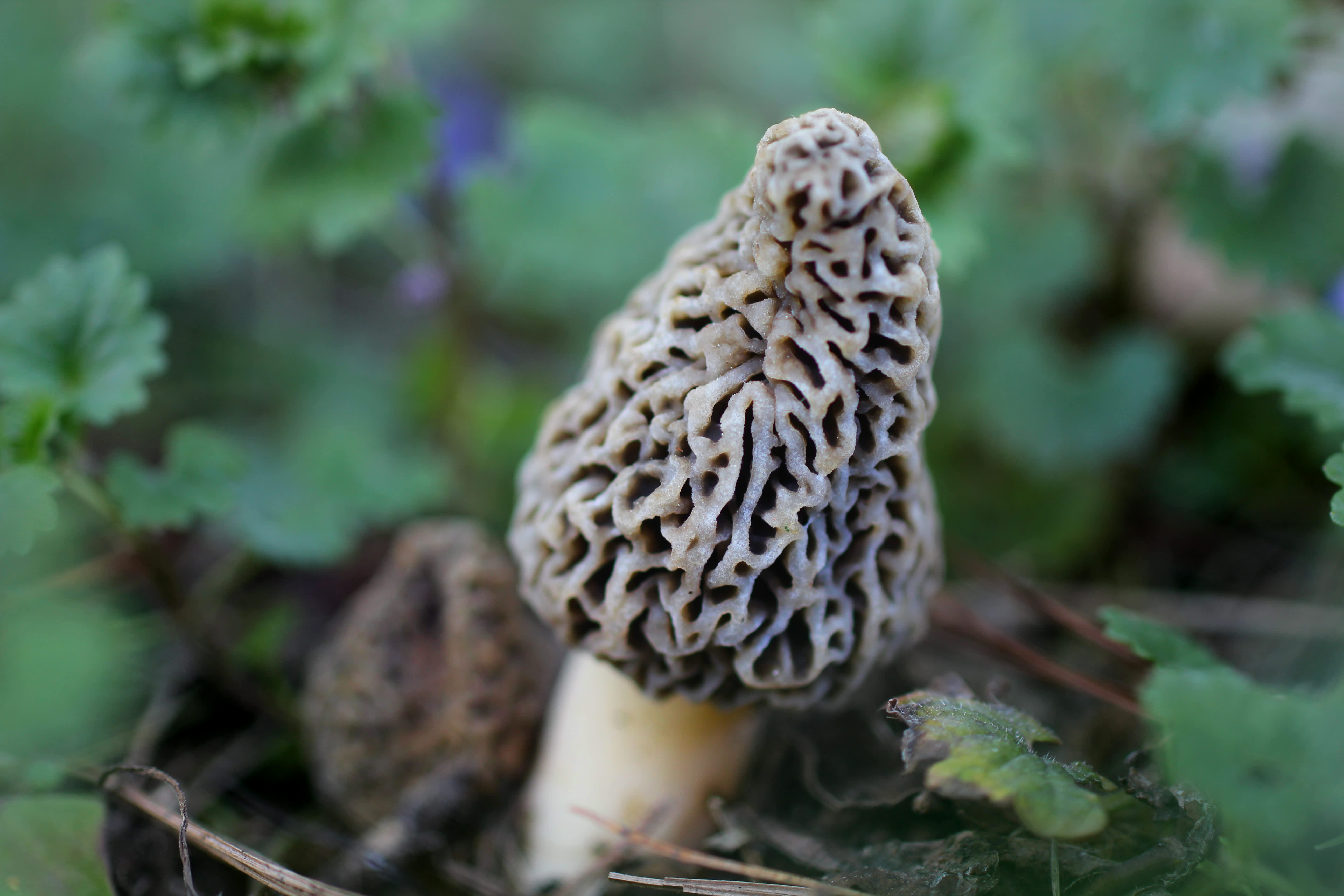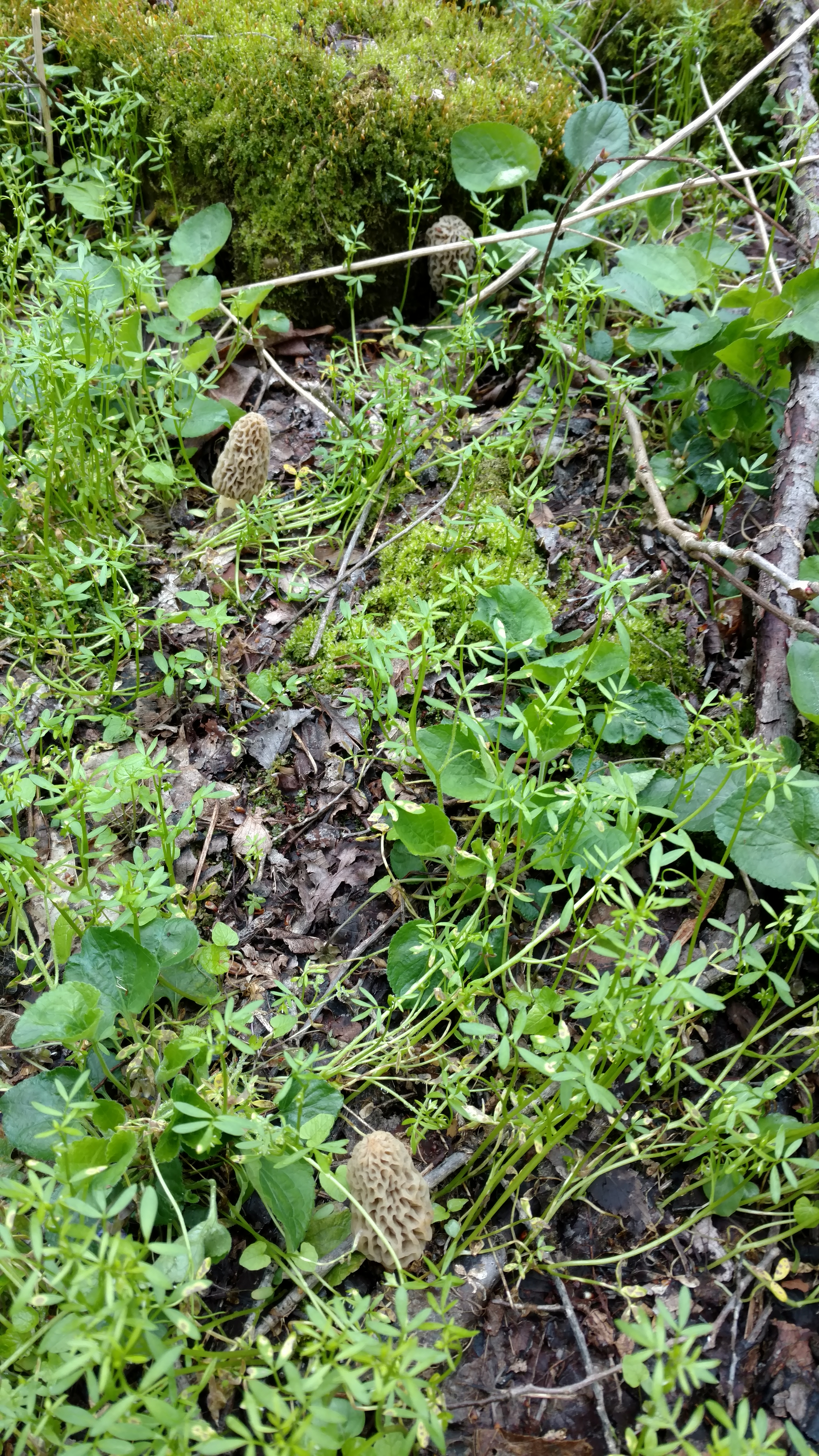Technical Gear and Tricks for Morel Hunting
OutdoorHub Social 04.29.16

“Dad can we go mushroom looking in the morning?” How could I resist? My youngest is incredibly cute, and happens to be as obsessed with mushroom hunting as I am.
I am by no means an expert and mushroom hunting (or “mushroom looking” as my youngest son says), but I have learned a few things along the way and seem to have pretty consistent luck. I don’t know what I enjoy more, eating the delicious morels after a long day of looking or spending time in the woods with my family and watching how much fun the kids have just finding them. Either way, here are some steadfast rules that I try to stick to when mushroom hunting.
Gear- #1 priority. Mushroom hunting, or anything in the outdoors is supposed to be fun. I use specific gear when I mushroom hunt, for several reasons. First on the list, personal protection. I really like the Bug Blocker sprays. First, the night before we go I will pre-treat all of our clothes with Bug Blocker for Ticks. With all of the nasty diseases ticks carry around, the last thing I need to deal with is one of them biting my kids. I also constantly carry a bottle of Bug Blocker mosquito spray for obvious reason. One quick dose from this aerosol spray can will keep us all safe from mosquitoes for an entire mushroom trip.
I tend to hunt morels on properties shared by other people. Sometimes I get there first, but usually I don’t, and am left picking the ones nobody else can seem to get to. That’s why I LOVE to wear my Recon gear while mushroom hunting. First I really value the tough rip-stop fabric material that sheds thorns and burrs. One of my best spots is in the middle of a huge thorn thicket, and with my Recon gear, I can walk out unscathed, with a bag full of juicy mushrooms.
I also like the Recon gear for their camouflage. Probably my best mushroom spot is right next to a very popular stretch of road. I know it sounds crazy, but I like to keep a low profile when mushroom hunting. With my Recon camouflage on I can get close but remain perfectly hidden. All the while, oblivious passers by have no idea what little gems are hidden right there, feet away from a public sidewalk. The pants and long sleeves also protect me from poison ivy which seems to like to grow near mushrooms. And like I said, I often get the leftovers, so I can’t be afraid of poison ivy patches either.
Another vital piece of gear are gloves to keep my hands protected from thorns and poison ivy. I prefer to use the Black Out Text Touch gloves. These gloves are like wearing nothing at all, allowing me to easily hold delicate mushrooms and cut them off clean with my knife.
The first thing to understand when mushroom hunting is how dependent they are on a good weather. The first mushrooms to show each spring are the black morels. Start to look for blacks at the end of April or beginning of May, after at least seven straight days of above freezing temperatures. Ideally, a couple days with some rain and 50 degree temperatures at night are perfect to get things fired up. If there are six straight days of no freezing, and then it freezes on the seventh day, the cycle starts over. It’s really very important that the soil temperature is right or the mushrooms won’t pop up. A good indicator of proper soil temperature are dandelions. As pesky is those things are, they can be a mushroom hunter’s best friend. When the dandelions are blooming, get ready. When they start going to seed, start looking for mushrooms.
I always begin looking for mushrooms near dying trees such as elms, ash, apple, and generally any softwoods. Ash is the exception to the rule, but for the most part mushrooms feed off decaying root material of softwood trees. Ash is considered a hardwood, but there is not much of it left around the Great Lakes thanks to our enemy the Emerald Ash Borer. If a tree is too dead, (to the point where the bark is falling off it while still standing) it might be past its mushroom hunting prime. It doesn’t hurt to look nearby anyway. The best advice is to find dying trees who haven’t quite shed their bark yet. Start by looking on the southern edge of these trees because that is where the soil will be the warmest from the most direct sunlight exposure. Too much heat isn’t good for mushrooms either, so make sure to always make a complete circle around the tree when looking, and don’t neglect the little nooks and crannies. For instance, areas under logs might grow some giant mushrooms where they can remain moist and still maintain a proper soil temperature. Once mushrooms are located on a southern side of the tree, they will continue to grow around the entire tree throughout the season as soil temperatures change, so be sure to come back and keep looking. Generally the blacks show up first followed by the “half frees”, then the grays, followed by yellows or whites, and lastly the giants. Blacks tend to grow rather sporadically whereas the others might grow in clumps. Many times people don’t even find blacks because they start looking too late.
When the first mushroom is located, everyone gathers around to thoroughly look it over. I find that the first one is often hardest to find. Once we see that first one, our eyes become acclimated to them again and the rest seem to pop out of nowhere. We cut or pinch the mushrooms, careful to not bring any more dirt in the sack then we need to. I have heard if the mushroom is cut delicately enough, the organism below the soil may produce more fruit. Each kid gets their own plastic mesh onion sack to collect their mushrooms and when a kid finds one- we all really celebrate. If the kids are having a hard time seeing them, I’ll find a few and call them over. I don’t tell them that I located any… but rather just tell them to start looking close in the new area. Usually they pick right up on them, and they get added to that child’s bag if there’s a friendly competition going.
When we return home there is usually no debate about what to do with the mushrooms. My wife will immediately wash them and plan a dinner around the tasty treats. If we do have too many (like that’s a real problem- too many morel mushrooms!?) and we can’t eat them all in one sitting, we will keep them dry in the refrigerator to eat the next day, or share with friends and neighbors. We found so many last spring that we experimented with how to best preserve them for the winter. My favorite way is to slice the mushrooms lengthwise, wash them, and dry them on my food dehydrator. They will shrivel up to pretty much nothing and are quite easy to store in a mason jar with a screw on plastic lid. I’ve also vacuumed sealed them fresh as well as dried and I haven’t met a morel yet I didn’t like! Like I said, it’s not often that we have too many, but when we are we are blessed with a bountiful pick, I do like to save some for winter.
I personally cannot wait for this spring’s mushroom hunting season. It’s a great way for my wife to spend Mother’s Day- and the week before and after as well. I honestly don’t know who has more fun, the kids or my wife and me. Either way, these are fantastic memories of us spending time outdoors as a family. Research shows that when adults reflect back on their childhood, they do not remember playing video games or watching TV. They remember vacations and being outdoors.
So get out with your family this spring and find some mushrooms. And when you do… “forget” where you found them and send us pictures!

